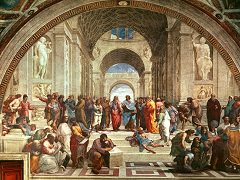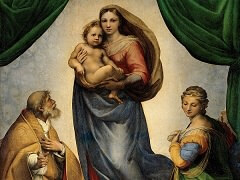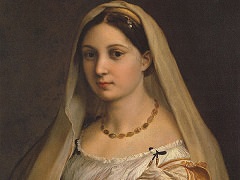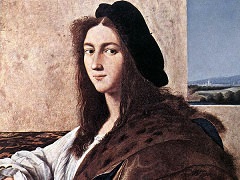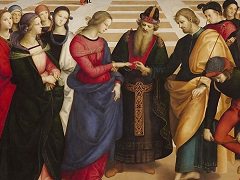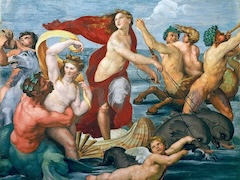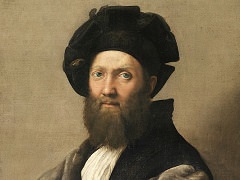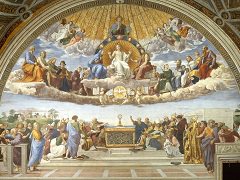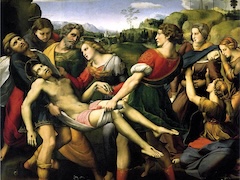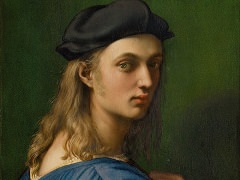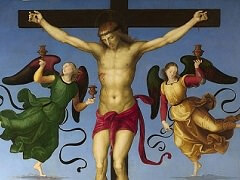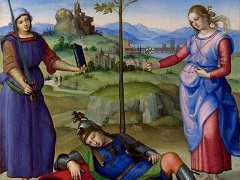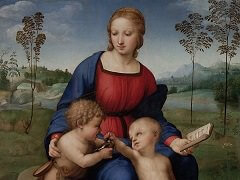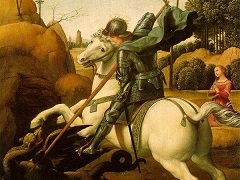Madonna del Prato - by Raphael
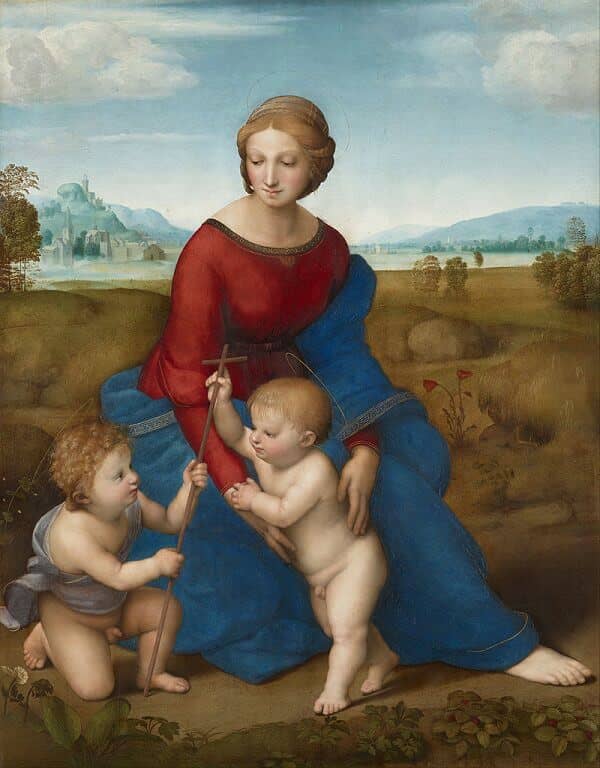
Madonna del Prato show Raphael's growing confidence in adapting formulas of Leonardo da Vinci in his own individual way in both the form and the content of his works. During the same period, Raphael was also responding to early sculptures by Michelangelo, the second great challenge to which Raphael responded with ever more convincing solutions.
As early as the Vienna Madonna del Prato, Raphael had employed the basic compositional structure of a pyramid: he recognized in it the magic ingredient in Leonardo's works, for it was a means of arranging figures spatially in a compact group. He saw examples of it in Leonardo's The Virgin of the Rocks, and also his Virgin and Child with St. Anne. In these works the figures are connected by looks and gestures in so complex a way that in this early attempt Raphael could not live up to the original in composition. The Virgin's foot in particular, which marks the lower right-hand corner of the triangle, extends rather too conspicuously from under her robe. The upper body seems flat, though her head is powerfully accentuated and her shoulders are shown to advantage as the blue mantle no longer covers her head. The boy Baptist is a direct quotation from Leonardo's The Virgin of the Rocks, and the Virgins long right arm is taken from the Virgin and Child with St. Anne. However, these motifs are not fully integrated. The way the Virgin Mary is holding her arms separates Jesus from St. John, so that the playful handing over of the cross, despite its great importance, seems a little forced.

